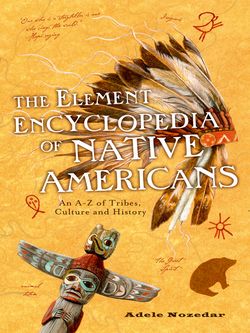Читать книгу The Element Encyclopedia of Native Americans: An A to Z of Tribes, Culture, and History - Adele Nozedar - Страница 107
CHEYENNE
ОглавлениеThe name Cheyenne was for a while believed to be derived from the French word for “dog,” which is chien, since this people had a noted society of Dog Soldiers. However, the name is actually a Sioux word meaning “people of different speech.” The Cheyenne name for themselves, Tsistsistas, means “beautiful people.” The Cheyenne were part of the large Algonquian language family.
The Cheyenne originally lived in what is now Minnesota, and moved to North Dakota, from which they were driven west by the Ojibwe and the Sioux. The Ojibwe destroyed the Cheyenne settlements, at which point the Cheyenne allied with the Arapaho.
The Cheyenne adopted the horse in the late 16th century, and rapidly became adept at both riding and breeding the animals. The coming of the horse meant a great change in their lifestyle, and the tribe gradually abandoned agriculture—as they put it, they “lost the corn” in favor of hunting buffalo. They also abandoned their former permanent homes in favor of the portable tipi.
The Cheyenne, in general, did not want to have fights with the white settlers, and were party to a treaty signed in 1851 which was intended to guarantee safe passage for the white settlers traveling along the Oregon Trail, which stretched from Missouri to Oregon. But when the settlers continued to encroach upon Native lands, they found themselves attacked by some members of the Southern Cheyenne. The Natives were then attacked by a force of cavalrymen in 1857. Then came the Colorado Gold Rush, which affected Cheyenne and Arapaho lands. Neither tribe wanted to sell their lands, and refused offers which would have involved trading territory and settling on a reservation. However, the governor of the area, John Evans, decided to force the tribes to agree by starting a war against them. The leader of the volunteer army was Colonel John Chivington, a notorious Indian-hater. In early 1864, Chivington started a merciless all-out attack on the Cheyenne and Arapaho. He razed their settlements to the ground, killed women and children, and stole their possessions. The Cheyenne retaliated by attacking white settlements. Matters came to a head at the Battle of Sand Creek.
Negotiations had been held outside Denver, Colorado, at which the tribes were informed that, if they agreed to camp nearby and checked in regularly at army posts, it would be assumed that a truce had been declared. This was agreed by the Cheyenne chief, Black Kettle, who led some 600 of his people to a place called Sand Creek, as agreed. Black Kettle assured the garrison there that he wanted peace. Chivington, however, although informed of what had happened, decided to attack the Indians anyway. Many of his soldiers were drunk when, at dawn on the morning of November 29, 1864, the Cheyenne were attacked. This despite the fact that Black Kettle had flown a white flag as well as the flag of the United States. Some 200 Cheyenne were murdered in one of the most appalling massacres in Native American history; further, half of those who were slaughtered were women, children, and babies. The ensuing outrage forced Chivington to resign.
The Cheyenne unified with the Lakota under Sitting Bull, and were among the force that fought against General Armstrong Custer in 1876. When they were defeated, the Cheyenne were forced to live on a reservation in the Indian Territory in Oklahoma. The Cheyenne chief, Dull Knife, hating conditions on the reservation, left a year later with a band of some 300 of his followers, intent on returning to Wyoming and Montana. They managed to escape capture for some six weeks before their pursuers—who numbered approximately 13,000 men—finally caught up with them. In the ensuing battle Dull Knife’s daughter was killed, and most of the band surrendered eventually at the Sioux reservation in South Dakota. The Cheyenne who had escaped were given a reservation in Montana.
The spiritual life of the Cheyenne encompassed ceremonies called the Arrow Renewal and the New Life Lodge (also called the Sun Dance). The mythical and legendary hero/god of the Cheyenne was a figure called Sweet Medicine.
